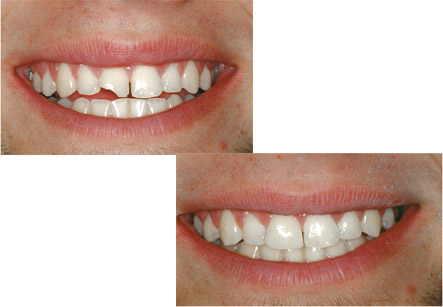Dental Bonding
Introduction
Dental bonding is a procedure in restorative dentistry which includes application of tooth-colored resin material (a durable plastic material) and hardening it with a special light, which cause bonding of the material to the tooth to improve a person’s smile.
Indications
The Dental Bonding is considered for following conditions:
1. For repairing of decayed teeth having cavities
2. For repairing chipped or cracked teeth
3. To close the gaps between teeth
4. To improve the look of discolored teeth
Iran offers a superior Dental treatments that is world best quality. For patients from the USA, and Europe for example, the savings can be 60% or more

5. To change the size or shape of tooth
6. As an alternative to amalgam fillings
7. To cover the exposed root of tooth after the gums recede.
Procedure of Tooth Bonding:
Preparation:
It is very convenient and least expensive procedure in cosmetic dentistry.
Very minimal preparation is required before the bonding process. Usually, the dentist uses a shade guide to choose the composite resin color which is the nearest match to color of the patient’s natural teeth. Anesthesia is usually not required before bonding process except when the procedure is done for filling of dental cavities.
The bonding process:
1. The surface of the tooth will be roughened by the dentist and a conditioning liquid is applied. These procedures prime the teeth for bonding or help the bonding material adhere to the tooth.
2. The selected tooth-colored, putty-like resin is then applied to the teeth. It is then molded and smoothed to acquire the desired shape.
3. An ultraviolet light or laser is then beamed over the teeth for hardening the material.
4. After the hardening process, the dentist further trims and shapes the bonding and also polishes it to match its shade and luster to the surface of natural teeth of the patient.
5. Entire Dental bonding process takes about 30 to 60 minutes per tooth for completion.
What Are the Advantages and Disadvantages of Dental Bonding?
Advantages:
1. It is very convenient and least expensive procedure in cosmetic dentistry.
2. Veneers and crowns must be manufactured in a lab; however bonding usually can be done in the dentist’s office itself in one visit.
3. Very less amount of tooth enamel needs to be removed as compared to veneers and crowns.
4. Anesthesia is usually not required before bonding process ewcept when the procedure is done for filling of dental cavities.
Disadvantages:
1. The material used in dental bonding does not resist stains as effectively as in dental crowns.
2. Another disadvantage is that the longevity and strength of materials used in bonding is less as compared to other restorative procedures like crowns, veneers, or amalgam fillings.
3. The bonding materials can chip and break off the tooth.
Taking into consideration these limitations, some dentists prefer bonding for small restorations, temporary correction of cosmetic defects as well as for correction of teeth where biting stress is very low as in front teeth. Discussion with the dentist regarding the best cosmetic approach is necessary before any procedure.
Care of the bonded teeth:
1. Special care is not required for bonded teeth.
2. Only good oral hygiene practices need to be followed like brushing the teeth at least twice a day and flossing at least once a day.
3. Visiting the dentist for routine check-ups and cleanings at least twice a year is required.
4. Habits such as biting fingernails; chewing on pens, ice, or other hard objects; using the bonded teeth for opening things.
5. Any sharp edges or discomfort while chewing with the bonded teeth should be informed to the dentist.
Life of Bonding Materials:
The lifespan of bonding materials for the teeth depends upon the extent of bonding and various oral habits. However, the bonding material lasts for a period of about three years to 10 years after which repair or replacement becomes necessary.